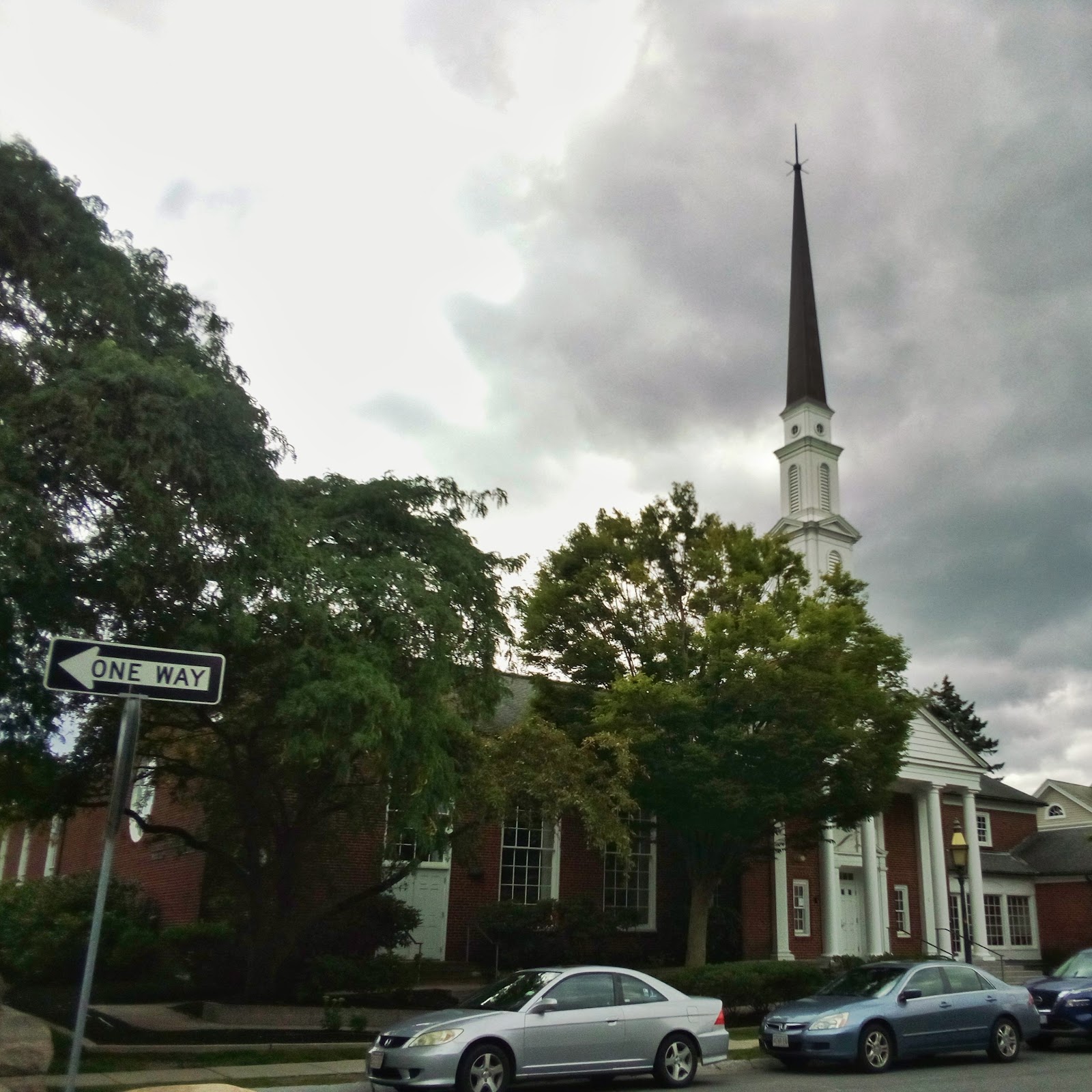Quick History Stops: Cambridge, MA | Part 2

Back in August 2023, I spent a day exploring historic sites in Cambridge, MA. While my main stops were Longfellow House Washington Headquarters, Cooper-Frost-Austin House, and Harvard Art Museums, I also visited several quick history stops during my adventure. While Part 1 covered the houses of Brattle Street, Part 2 focuses on Cambridge Water Works, Watertown Cambridge Greenway, and Mount Auburn Cemetery, along with houses of worship in Cambridge.
Cambridge Water Works & Watertown Cambridge Greenway
According to WaterWorksHistory.us: Documentary History of Water Works, a delightfully niche barebones website with a wealth of information on aquatic infrastructure, Cambridge Water Works began in 1852 as a private company. By 1861, it bought its rival Cambridge Port Aqueduct Company, which had begun in 1837. Both companies laid pipe and built aqueducts to funnel fresh springwater into the city. In 1865, the City of Cambridge bought the water works and uses the system to this day. Next to the water works headquarters is Watertown Cambridge Greenway, a paved pedestrian and cycling trail managed by the Massachusetts Department of Conservation & Recreation (DCR). The trail was started in 2013, finished in 2022, and built atop the line of the former Boston & Maine Railroad (B&M).




Mount Auburn Cemetery & Townline Marker
After walking the Watertown Cambridge Greenway, I came to the street and went past Mount Auburn Cemetery, an organization that considers itself “a nonprofit cemetery, museum and sculpture garden, arboretum, wildlife sanctuary, and historic site”. In 1831, this cemetery opened as a burial site for Bostonians. During the 19th century, people used cemeteries as parks by planting shade trees and creating narrow walking paths so visitors could admire the funerary artwork. This cemetery sold guidebooks highlighting the best monuments. The park was modernized throughout the 20th century with wider, straighter paths. The cemetery has been on the National Register of Historic Places since 1975 and was declared a National Historic Landmark in 2003. Next to the chain linked fence separating the cemetery from the sidewalk, a stone mile marker erected in 1829 defines the boundary between Cambridge and Watertown.



Holy Trinity Armenian Apostolic Church of Greater Boston
On Brattle Street, not far from Longfellow House Washington Headquarters, the Holy Trinity Armenian Apostolic Church of Greater Boston (HTAAC) was constructed in 1961. This house of worship stands out from other churches found later in this post not only because of its relatively recent construction date, but also because of its Eastern European style, a sharp contrast to those Georgian, Federalist, and Romanesque buildings. A memorial on the front lawn commissioned in 1995 commemorates the 80th anniversary of the Armenian Genocide.


The Church of Jesus Christ of Latter Day Saints Institute of Religion, Cambridge Ward
Two religious buildings are located in Longfellow Park across the street from Longfellow House Washington Headquarters. The first I will call Mormon Church for the sake of brevity. The current building was constructed in 2011 after a fire destroyed the original building, which had been constructed in the 1950s. This new version is a close replica. Not much additional information on the building or its congregation exists online.


Friends Meeting at Cambridge
In contrast to its neighbor, Friends Meeting at Cambridge provided a huge amount of information on its past and present. Quakers have lived in Greater Boston since 1656, and the first congregation in Cambridge began in 1914 at Harvard Yard. By 1937, the congregation bought a house originally belonging to Alice May Longfellow, daughter of Henry Wadsworth Longfellow, and added an additional building to create a Friends Center and the Meeting House. The congregation founded its own school in the 1960s and is dedicated to helping people from all walks of life and ability.


Saint Paul’s Catholic Parish
With construction beginning in 1915 and a dedication on Easter Sunday of 1923, Saint Paul’s Catholic Parish stands out from other buildings in the area because of its Romanesque red brick style, round front window, and tall bell tower. The design was inspired by the 12th century Basilica of San Zeno in Verona, Italy built of white tufa stone and painted white brick. The Italian church was made famous to the English speaking world by William Shakespeare, as it was the site of the wedding of Romeo and Juliet.


Christ Church Cambridge
The congregation at Christ Church Cambridge began in 1759, and the building was designed by Peter Harrison, a Newport, RI native whose other designs appearing on this blog include the original Beavertail Lighthouse in Jamestown, RI and Touro Synagogue in Newport, RI. Unfortunately, the church was unfinished when many of the wealthy Loyalist parishioners fled in 1774. Except for a service held on December 31, 1775 to appease Martha Dandridge Washington, regular services did not resume until 1790, a few years after the Revolution was over and the Church of England congregations became Episcopalians. In 1857, the church was renovated to accommodate the growing congregation. In the late 1870s, future president Theodore Roosevelt attended the church while a student at Harvard, although he was Dutch Reformed (like me!). The most recent renovation came in 2020, as the ground in front of the church was raised to create a wheelchair accessible entrance.





